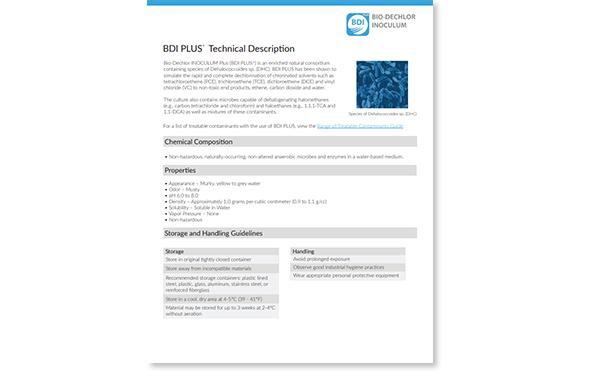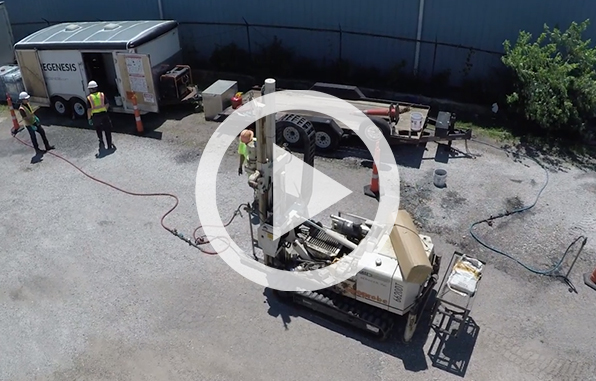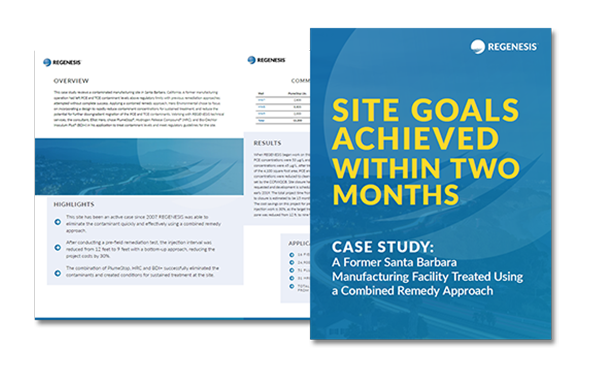


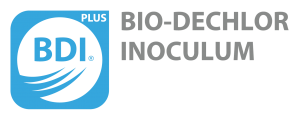
An Enriched, Microbial Consortium Containing Species of Dehalococcoides sp. (DHC) for Anaerobic Bioaugmentation Applications
- Rapid and effective treatment of undesirable anaerobic dechlorination intermediates such as dichloroethene (DCE) and vinyl chloride (VC)
- A low-cost means of enhancing the anaerobic biodegradation process
- Application can occur at almost any stage of a project, beginning, middle or end
- Highly compatible with a range of electron donors such as 3-D Microemulsion and HRC.
- Ease-of-application and handling
RESOURCES
How it Works
Trends in engineered bioremediation indicate that the treatment of chlorinated solvent contamination can, under circumstances, result in the slow biodegradation of intermediate compounds. When faced with this problem, bioaugmentation with a microbial consortium such as Bio-Dechlor INOCULUM® Plus offers a solution to accelerate the complete dechlorination of these otherwise recalcitrant contaminants.
Bio-Dechlor INOCULUM Plus (BDI Plus) is designed for use at sites where chlorinated contaminants are present and unable to be completely biodegraded via the existing microbial communities. BDI Plus is an enriched, natural microbial consortium containing species of Dehalococcoides sp. (DHC) which are capable of completely dechlorinating contaminants during in situ anaerobic bioremediation processes. BDI Plus has been shown to stimulate the rapid dechlorination of chlorinated compounds such as tetrachloroethene (PCE), trichloroethene (TCE), dichloroethene (DCE), and vinyl chloride (VC). It also contains microbes capable of dehalogenating halomethanes (e.g. carbon tetrachloride and chloroform) and haloethanes (e.g. 1,1,1 TCA and 1,1, DCA) as well as mixtures of these halogenated contaminants.
BDI Plus can be used at most any stage of a project to ensure the rapid and complete degradation of chlorinated compounds. Specifically, Bio-Dechlor INOCULUM Plus can be added to an aquifer at the beginning of a project in situations where there is a lack of, or suboptimal populations of Dehalococcoides sp.
BDI Plus is provided in a liquid form which is directly injected into the contaminated subsurface either with or following a staged-release electron donor (food source) application. Once in place, this microbial consortium accelerates the extant rate of chlorinated contaminant degradation from parent compounds to intermediates (like dichloroethene (DCE) and vinyl chloride (VC)) and completely through to harmless end products such as ethene and ethane.
Electron Donor Compatibility
BDI Plus is compatible with most electron donors however it is recommended that remediation practitioners use a staged-release technology like 3-D Microemulsion® or Hydrogen Release Compound (HRC®) for optimal performance and longevity.
Target Contaminants:
Chlorinated Solvents
- Tetrachloroethylene (PCE)
- Trichloroethene (TCE)
- cis-1,2 Dichloroethene (DCE)
- Vinyl chloride (VC)
- Tetrachloroethane
- Trichloroethane (TCA)
- Dichloroethane (DCA)
- Carbon tetrachloride
- Chloroethane
For a complete listing of treatable contaminants please visit our Range of Treatable Contaminants Page.
Typical Soil and Groundwater Remediation Application Methods:
Application/Injection:
- Permanent injection wells
- Direct-push injection points
Research Article: Addition of Divalent Iron to Electron Donor Mixtures
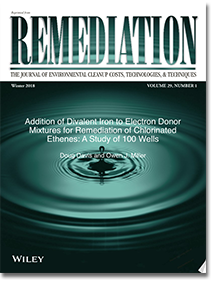 The objective of this study is to asses the effects of adding soluble divalent iron (DVI) to emulsified electron donor mixtures to promote the biogeochemical destruction of TCE, PCE, cis-1,2 DCE, and VC in groundwater. 24 projects sites were studied, comprising 100 performance monitoring wells across the US. Wells that received the DVI showed increased dechlorination rates, improved contaminant reduction, and limited daughter product formation relative to the wells that did not receive the DVI.
The objective of this study is to asses the effects of adding soluble divalent iron (DVI) to emulsified electron donor mixtures to promote the biogeochemical destruction of TCE, PCE, cis-1,2 DCE, and VC in groundwater. 24 projects sites were studied, comprising 100 performance monitoring wells across the US. Wells that received the DVI showed increased dechlorination rates, improved contaminant reduction, and limited daughter product formation relative to the wells that did not receive the DVI.
Next Steps:
If you currently have a project and need a remediation solution now, visit our Request a Design page.
Have questions or want to explore some ideas? Contact Us to get in touch with a local representative.

 Americas
Americas Europe
Europe Français
Français Deutsch
Deutsch Italiano
Italiano Español
Español